IT must focus on culture, not always technology, says Etihad CIO
Slow decision making and a closed structure will trip up businesses

CIOs must take risks and focus on culture issues to succeed, according to Etihad Aviation Group's chief information officer.
Their main challenges now include security, privacy and IT complexity, as well as the cultural challenges of communication, partnership and speed of change, said Robert John Webb, group chief information and technology officer at Etihad Aviation Group.
"That's to do with risk taking," Webb said. "If you get comfortable with a higher risk tolerance and you start making decisions together, you're going to be able to go fast to win. If you're not transparent, and you're slow, you're going to lose.
"How do you communicate the risk of [your business] not going fast? CIOs also need to be prudent, because it's a risky job: stuff goes wrong in IT. So you need to be able to balance, we want to go fast, but we don't want to hit the wall'. That's the science and the art."
Sunny Gupta, Apptio CEO, was present at the Technology Business Management conference roundtable in London, and offered the company's own research on what the top priorities were for 24 CIOs surveyed.
"Eighteen of the CIOs noted that the big shift was digitalisation, they were being asked become digital officers and drive digitalisation," said Gupta.
The respondents also felt that shifting budgets from maintenance to innovation was equally important.
Get the ITPro daily newsletter
Sign up today and you will receive a free copy of our Future Focus 2025 report - the leading guidance on AI, cybersecurity and other IT challenges as per 700+ senior executives
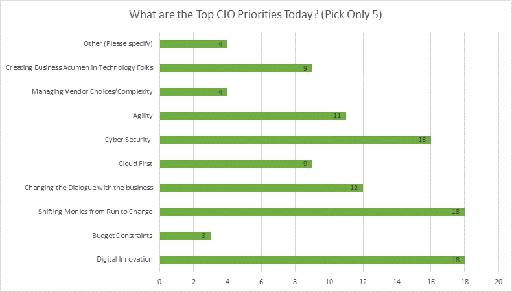
Image: CIO priorities survey 2016 table. (Apptio, June 2016)
Pedro de Freitas, CIO at the Scandinavian arm of insurance firm RSA, added that financial services firms face significant issues ensuring that cloud integrates with their legacy systems.
He said: "Some of the key priorities are security and compliance, definitely. And then, after that, comes the agility. But, for me, it comes down to balancing act of addressing [sic] alteration versus exploration. There's no magic formula."
Accounting for the balance between migrating to new SaaS and budgeting for existing kit maintenance, Etihad's Webb explained: "In today's world, you turn on software-as-a-service. You turn on SAP Simple Finance in the cloud. When you use a subscription service, you need to be able to compare what your investment levels are when you're doing something in the cloud versus in the old ways. There are dozens and dozens of domains that you have to go through that exact analysis [for] to make those types of decisions."
He added: "How do you consider lock-in? And your rate of interest is different. So our rate of interest in mobile in the transportation and airline industry is much, much faster than in online or these back-office systems. How do you track that that we're investing enough in these next-generation systems to keep up with expectation from consumers?"
This need to stay current in the most cost-effective manner possible leads some CIOs to believe their entire IT departments need to work differently.
"We are seeing the IT operating model, the culture, and the skills needed changing fundamentally," said Gupta.
"[I met with] a very large customer in the UK. They told us: Apptio needs to help my people become business people rather than technology people. They are so used to talking technology. Yes, we expect them to talk technology, but they have to become commercially-minded."
-
 Should AI PCs be part of your next hardware refresh?
Should AI PCs be part of your next hardware refresh?AI PCs are fast becoming a business staple and a surefire way to future-proof your business
By Bobby Hellard Published
-
 Westcon-Comstor and Vectra AI launch brace of new channel initiatives
Westcon-Comstor and Vectra AI launch brace of new channel initiativesNews Westcon-Comstor and Vectra AI have announced the launch of two new channel growth initiatives focused on the managed security service provider (MSSP) space and AWS Marketplace.
By Daniel Todd Published
-
 Protecting CIOs' IT budgets is "paramount" in maintaining business growth
Protecting CIOs' IT budgets is "paramount" in maintaining business growthNews If CIOs are forced to make emergency budget cuts, they should also explain the risks to high level stakeholders so the responsibility is shared
By Zach Marzouk Published
-
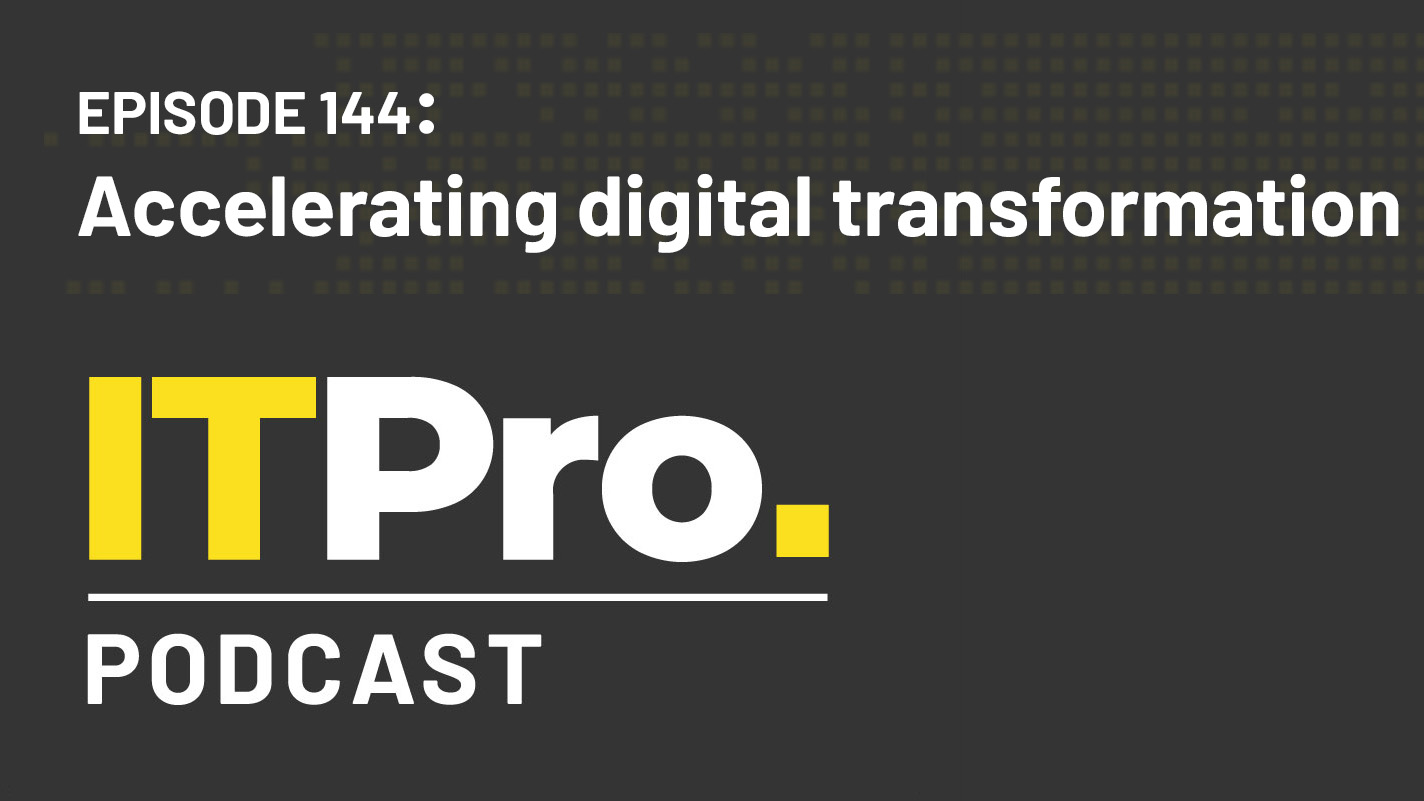 The IT Pro Podcast: Accelerating digital transformation
The IT Pro Podcast: Accelerating digital transformationIT Pro Podcast Implementation is just as important as the value of change
By IT Pro Published
-
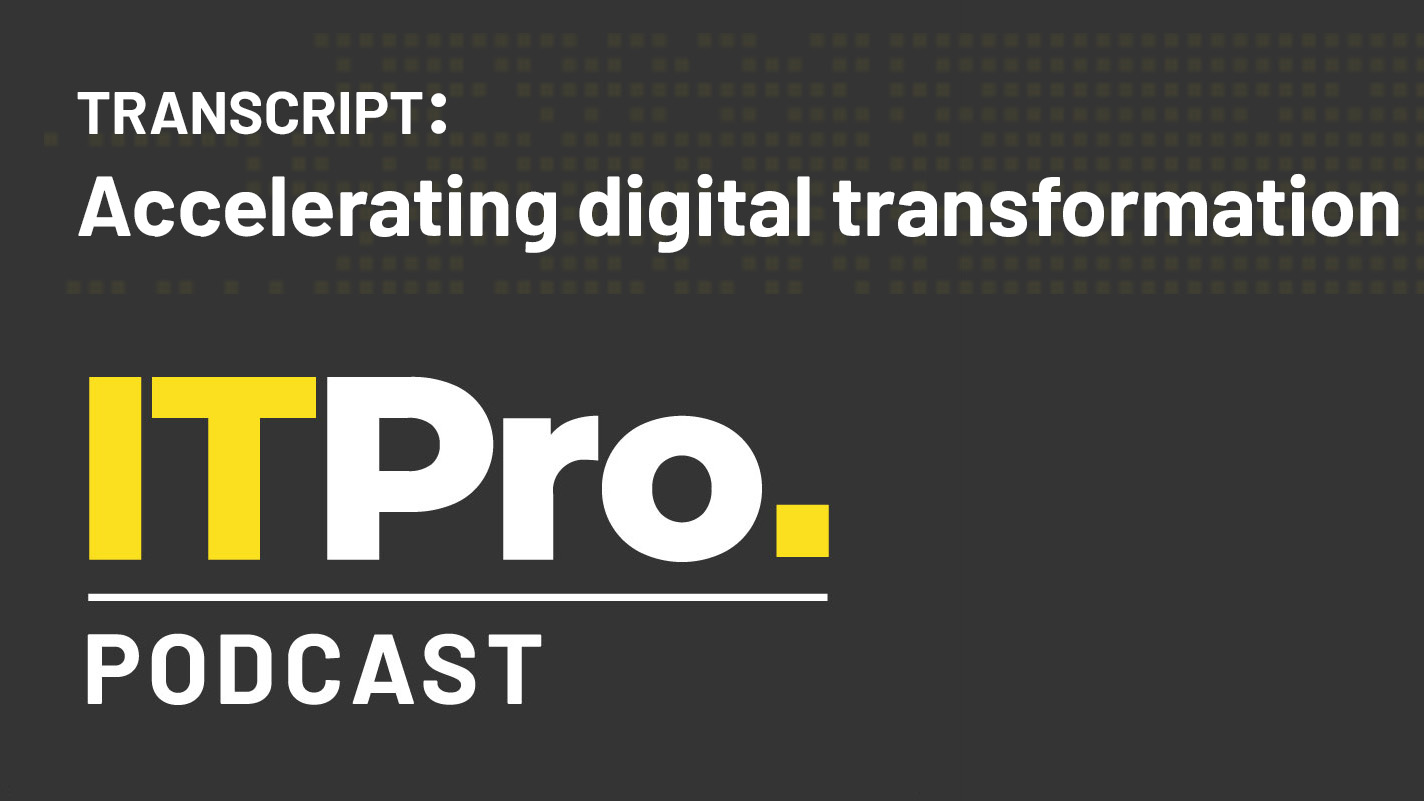 Podcast transcript: Accelerating digital transformation
Podcast transcript: Accelerating digital transformationIT Pro Podcast Read the full transcript for this episode of the IT Pro Podcast
By IT Pro Published
-
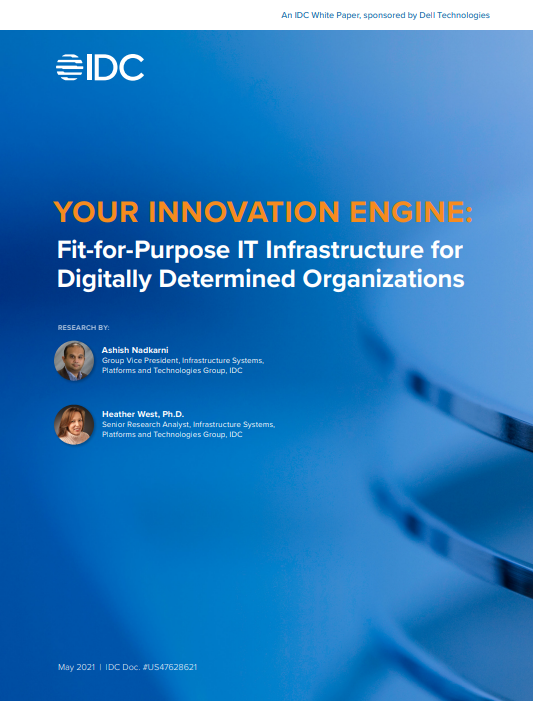 Fit-for-purpose IT infrastructure for digitally determined organisations
Fit-for-purpose IT infrastructure for digitally determined organisationsWhitepaper Your innovation engine: Guiding organisations through change in the new digital economy
By ITPro Published
-
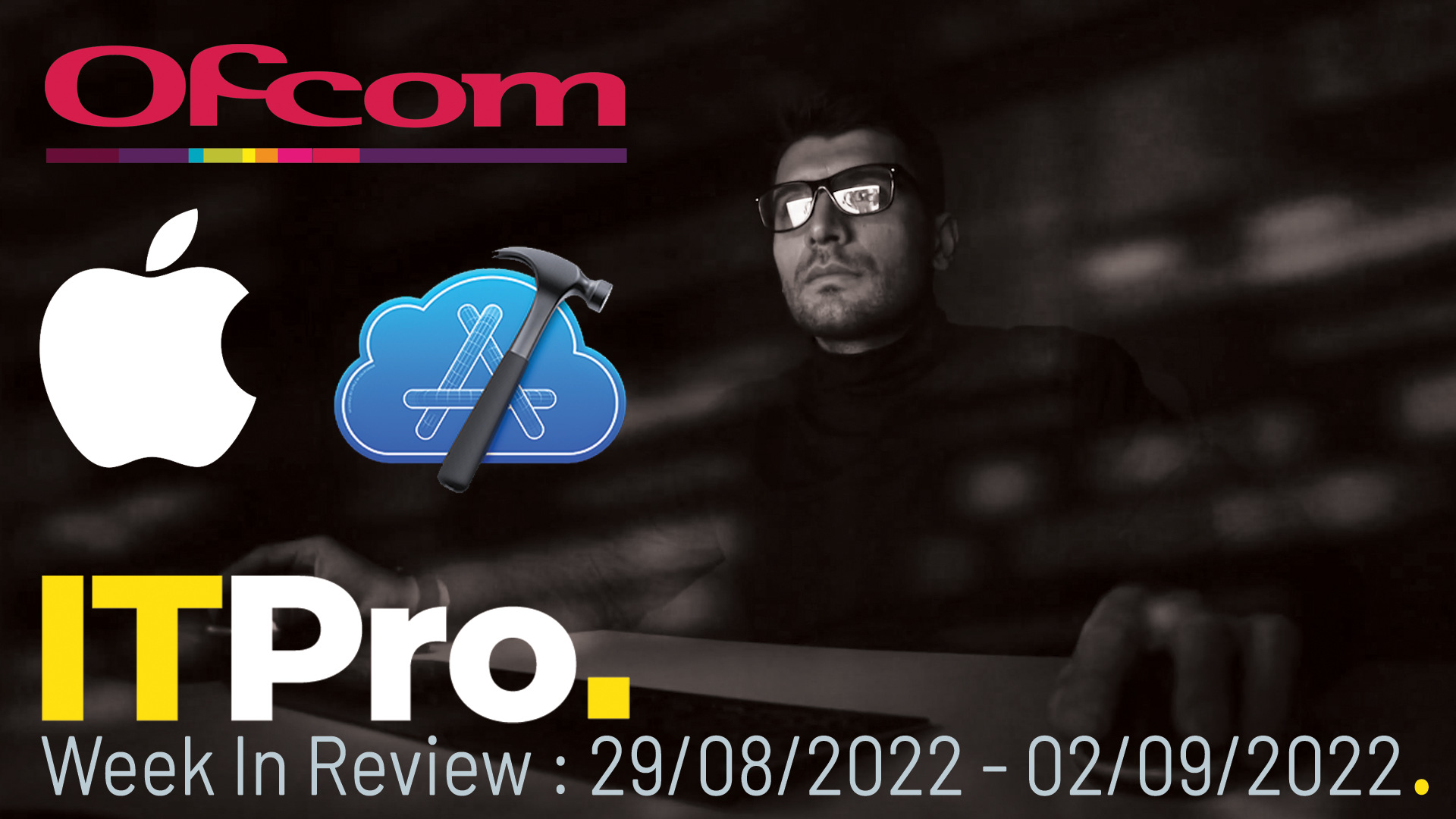 IT Pro News in Review: CIOs face a challenge, Ofcom's telecom fines, Apple expands Xcode
IT Pro News in Review: CIOs face a challenge, Ofcom's telecom fines, Apple expands XcodeVideo Catch up on the biggest headlines of the week in just two minutes
By IT Pro Published
-
 CIO role has 'drastically changed' over last 24 months, says Lenovo
CIO role has 'drastically changed' over last 24 months, says LenovoNews Globally survey suggests chief information officers have greater influence over their company now the role has expanded beyond technology
By Bobby Hellard Published
-
 How can CIOs help to close the tech skills gap?
How can CIOs help to close the tech skills gap?In-depth The most well-equipped IT leaders can take a number of practical steps to close the divide within their organisations
By Rene Millman Published
-
 What is a virtual CIO (vCIO) and does your business need one?
What is a virtual CIO (vCIO) and does your business need one?In-depth With tech skills in short supply, organisations are turning to temporary expertise to see through critical digital transformation projects
By Mark Samuels Published